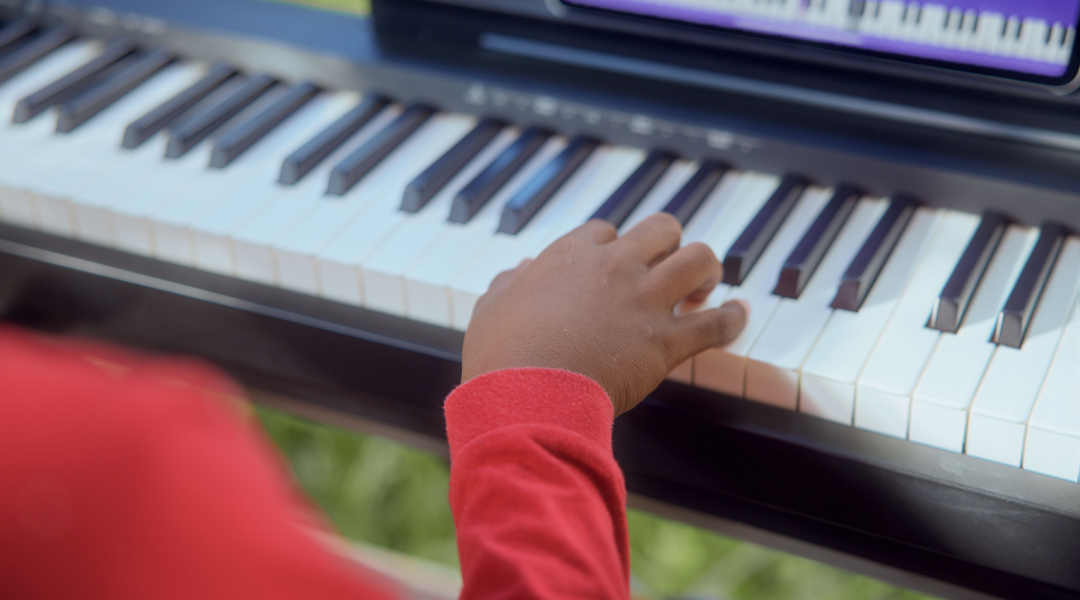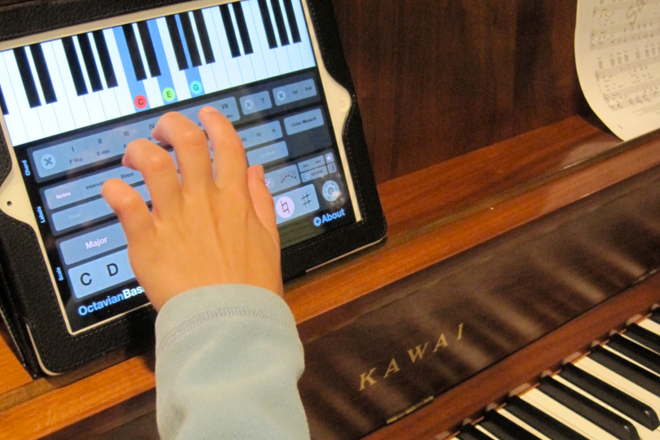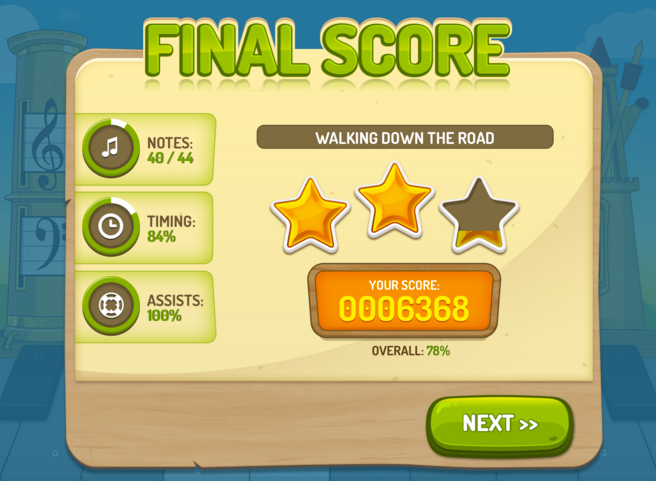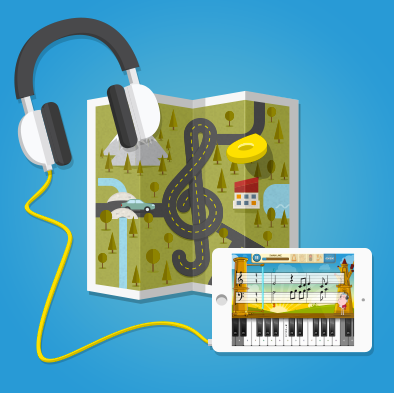10 Tips to Improve your Rhythm

Does moving to a beat freak you out? Not to worry–here are ten tips to improve your rhythm.
Rhythm is an essential element of music, but don’t feel bad if you have challenges with your sense of rhythm. Most musicians need hard work to master this aspect of their playing.
Ready to improve your rhythm? Our ten tips send you well on your way towards being a much better musician(and an absolute wizard on the dancefloor).
- 1. Practice rhythms
- 2. Move to the beat
- 3. Get familiar with the song
- 4. Be confident, even if it’s not perfect
- 5. Use a metronome
- 6. Divide the beats and practice
- 7. Play before or after the beat
- 8. Use words to learn common rhythm patterns
- 9. Use resources: Apps, drum machines, and backing tracks
- 10. Know when to take a break
- FAQs.
1. Practice rhythms
Rhythm isn’t something you simply get one day–it takes practice.
So, adding rhythm exercises to your practice routine is a priority.
2. Move to the beat
You can understand beats conceptually, but you can also feel them. Use body movements to play out the beats [rhythm] physically–nodding your head, tapping your foot, or even dancing to the music.

The goal is to sync the beats you hear with your movements. The more you do this, the more you will feel the beat without even thinking about it.
Surprisingly, even good musicians can find it challenging to recognize a beat and move to the rhythm. So, don’t assume you’re an expert at rhythm because you’re efficient at other aspects of music. The more you practice at this, the more rhythmically accurate you’ll be when playing your instrument.
3. Get familiar with the song
Similar to how it improves speed and accuracy, familiarity with a song improves rhythm too. Being comfortable with all aspects makes it easier to play the rhythm correctly and ensures your hands stay in sync.
Rhythm closely relates to a song’s time signature, which is how to count the specific piece’s music. Give yourself an idea of what the song’s rhythm will be like by knowing the time signature.

On sheet music, you’ll see the time signature as a fraction on the left side of the music staff–for example, 6/8. You can also practice identifying the music signature when listening to a track:
- Look for patterns that repeat
- See if you can identify if any notes have an accent
- In a set of notes that repeat, how many notes are there?
- Can you hear on which beats the chords change?
Knowing and memorizing all chords helps to keep your hands in sync. When you’re comfortable using both hands, one won’t be ahead of the other and trip up the rhythm.
Once comfortable with the song, start playing the piece faster and faster–but only as fast as possible without compromising quality and accuracy.
This beginner’s guide for reading music sheds some more light on time signatures.
4. Be confident, even if it’s not perfect
Another reason you may be hesitant and not get the rhythm right is if you don’t play with confidence. This takes the right attitude and mindset, but you’re halfway there if you realize it doesn’t have to be perfect.
Simply do your best and enjoy it, and you’ll be surprised at how well it sounds. Also, when you don’t stress about getting everything right, you’re more aware of the music, and chances are you’ll feel the beat much more easily.
5. Use a metronome
Your metronome should be your best friend if you want to be a good musician and get better at rhythm.
Some musicians don’t like playing with a metronome, but it helps if you view it as another person in your band instead of just an object. In the same way, band members practice to play in sync with one another and get used to staying in time with their metronomes.
Use your metronome in the following ways:
- Set a beat and play a scale along with it. Focus on feeling the beat while you play.
- Use a metronome with a tap tempo feature. Play a song and tap the metronome according to the rhythm you feel. See what the metronome tells you the time signature is.
The more you do these exercises, the better your sense of rhythm will be.
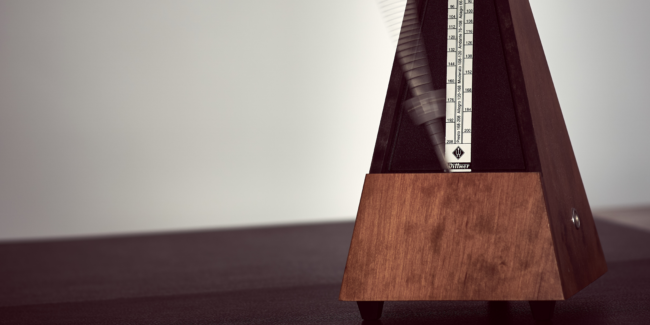
6. Divide the beats and practice
You can divide one beat into smaller ‘pieces’. Do this and practice playing them and sounding them out. You can play it on a drum set, clap it out or tap your hand on a desk. Examples of beat divisions include:
- 1 & 2 & 3 & 4 &—eighth notes
- 1 e & a 2 e & a 3 e & a 4 e & a—sixteenth notes
- 1 & a 2 & a 3 & a 4 & a—triplets
7. Play before or after the beat
Playing offbeat can help you grasp the sense of rhythm. Try playing a note just before or just after a beat. This is how you practice identifying the beat, which adds a different flavor to your play that can enhance it, even though it sounds unstable. For example, playing a note after the beat can make it sound more exciting.
8. Use words to learn common rhythm patterns
Even though these words have three syllables, “example” and” saxophone” have different pronunciations.
This can help you understand how different rhythmic patterns work. Simply create a list of words that correlate with a set of rhythmic patterns. These speech rhythms give you an idea:
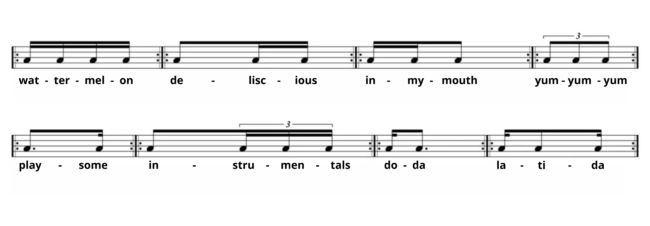
9. Use resources: Apps, drum machines, and backing tracks
You live at a time when technology provides us with so many resources. So use them!
- Instead of playing alone on your instrument, play with a drum machine so you can hear the tempo clearer.
- Download tracks and play along with them, using them as a guide to follow.
- Start playing right away using our Simply Piano app. Access custom learning tools and receive instant feedback as the app listens to your practice.
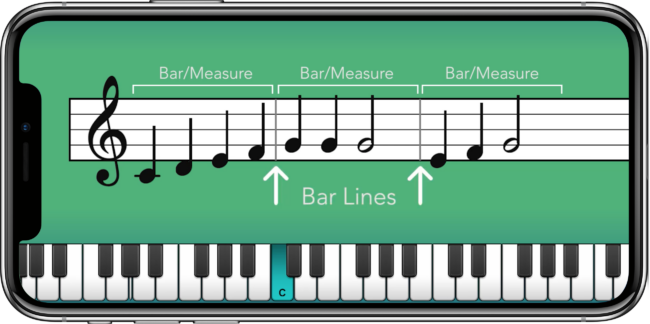
10. Know when to take a break
Working hard to improve your rhythm is important, but so is resting between your practice sessions. Hours of practice will pay off but don’t overdo it and become overwhelmed because you’re not getting it. Decide on practice time and stop when it’s over.
While you take a break from practicing and sleep, your mind processes what you were busy with during your session. When you start the next practice, you realize you grasp more than before because your brain works hard at what you find challenging, even while you don’t focus on it.
You won’t magically improve your rhythm in one day. It requires dedication to exercises that help you learn more about rhythm and make it easier to identify a song’s rhythm and play it correctly.
Many factors determine how well you interpret the rhythm, from how comfortable you are playing the chords to understanding time signatures. Implement more and more of our tips on improving your rhythm in your practice routine, and you’ll soon see the difference!






